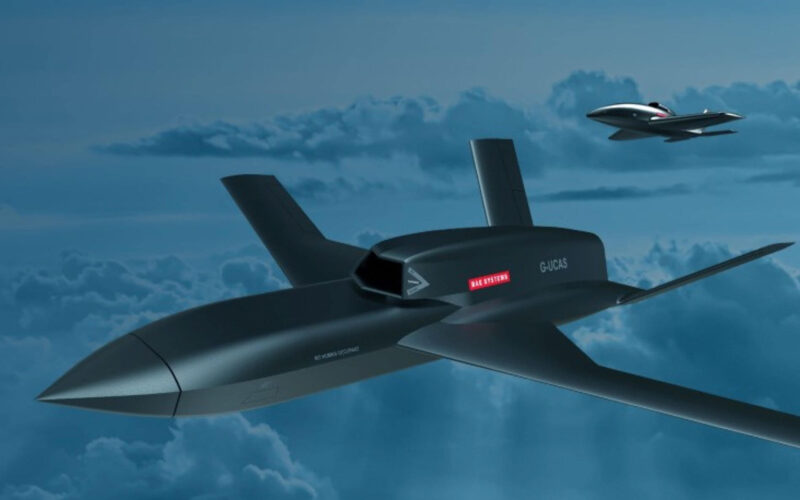BAE Systems has revealed two new drone concepts that could take the place of the Mosquito loyal wingman program.
One of them is designed as a stealthy, attritable medium-sized aircraft with air-to-air and air-to-ground capability, highly reminiscent of its cancelled predecessor.
The second one is a small, expendable aircraft intended for electronic warfare and ground attack, presumably acting as a loitering munition.
Both programs were unveiled at Royal International Air Tattoo (RIAT) air show. The names for the drones have not been revealed yet, with BAE’s promotional material calling them “UAS Concept I” and “UAS Concept II” respectively.
The industry effort to develop and acquire the aircraft is going to be launched in the third quarter of 2022, Chief of the Air Staff, Air Chief Marshal Mike Wigston said ahead of the Farnborough Air Show, Janes reports.
“The work has been challenging, but we have learned and gained a huge amount from our Mosquito programme around digital design and novel manufacturing techniques. We’ve decided that our focus now should be on systems that can be operationalised much more quickly, and that is why we have drawn the Mosquito programme to a close,” Janes quotes Wigston.
Project Mosquito, which aimed to develop a loyal wingman – an unmanned aircraft that could accompany manned jets into battle – was cancelled in late June 2022 following nearly two years of development.
According to BAE’s promotional material displayed at RIAT, the ability to perform as a part of a drone swarm is going to be integral to both new drones.
This ties into Wigston’s earlier announcement at the Global Air and Space Chiefs’ Conference 2022, when he revealed that the UK military is working heavily on swarming technology as a way to overwhelm advanced air defense networks.
According to Wigston, the RAF experimented with drone swarms and found them highly effective in cracking air defenses, leading to the ability being prioritized in new development programs, Defense News reported.

